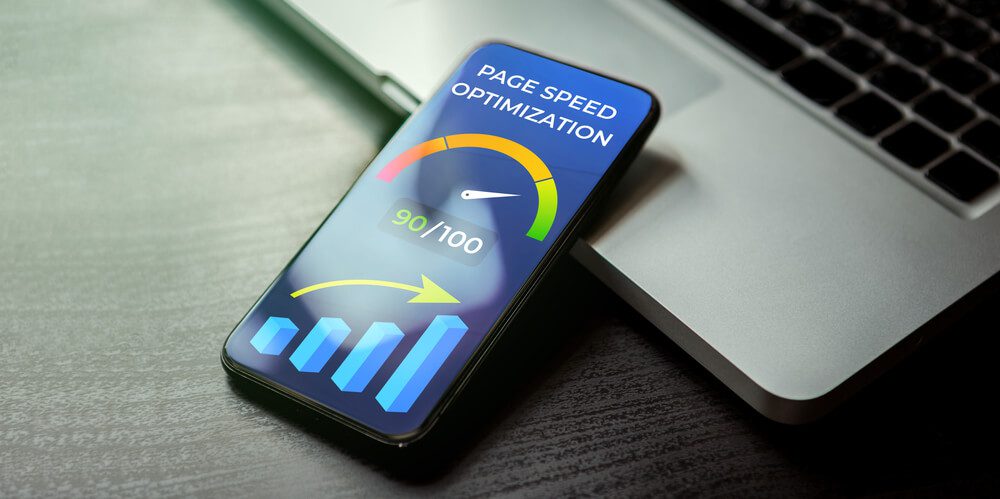
Technical SEO for Mobile: How To Achieve Optimal Performance
Prioritizing mobile technical SEO is necessary for businesses wanting to rank and drive organic traffic. It designs content for smaller screens and improves user experience (UX).
Mobile optimization also makes content accessible to a growing population browsing the internet through the device. Most of all, it makes your search engine optimization (SEO) compliant with Google’s mobile-first indexing.
This article shares the best tips on mobile technical search optimization based on the following factors:
- Mobile-friendly website design
- Page speed optimization
- Better UX
- Accelerated Mobile Pages (AMPs)
- Structured data
- Monitoring of mobile SEO performance
Read below to discover how mobile SEO boosts your website’s ranking and online presence. Let’s go!
Watch this video to learn how Digital Authority Partners tackles Technical SEO!
1. Create a Mobile-Friendly Website Design
A mobile-friendly site has several essential elements. These include responsive web design, touch-friendly navigation, and interface usability. All these profoundly affect UX and SEO performance. A mobile-friendly website is easier to index and rank. It is also more visible to mobile search users.
Let us focus on these elements below:
a. Responsive Web Design
A responsive design adapts seamlessly to various screen sizes and devices. It provides an optimal viewing experience through flexible layouts and fluid grids. Additionally, it eliminates creating separate website versions and makes content accessible.
All these features enhance UX, reduce bounce rates, and increase engagement. From an SEO perspective, a responsive website improves search rankings. It simplifies site management and avoids issues such as duplicate content.
b. Touch-Friendly Navigation
The best mobile interfaces feature touch-friendly elements, such as larger buttons and easily tappable links. These designs facilitate effortless navigation on touchscreens. Meanwhile, intuitive gestures such as swipe, pinch, and zoom improve usability and encourage users to explore the site longer.
Seamless and user-friendly navigation enhances user satisfaction, reduces bounce rates, and positively influences engagement metrics. These factors are what search engines consider in rankings.
c. Mobile Interface Usability
Good mobile interface usability optimizes user interactions and provides quick access to essential information. Usability strategies include fast-loading pages, concise and scannable content, and simplified forms for easy input on mobile devices.
A smooth and user-centric interface enhances user experience. It promotes extended and repeat site visits, indirectly improving SEO performance by signaling site relevance and quality.
Overall, a mobile-friendly design with responsive layouts, touch-friendly navigation, and optimized usability enhances UX and influences rankings by making content more accessible and engaging.
2. Optimize Page Speed

Mobile technical SEO provides many benefits, including a fast page load that boosts access to information. It also reduces bounce rates and increases retention by satisfying users’ shorter attention spans.
Here are technical SEO best practices to optimize page speed:
- Use image compression tools to reduce file sizes without compromising quality. Compressed images load faster, improving mobile page speed.
- Leverage browser caching by setting cache-control headers for static resources. Tools such as WP Rocket or W3 Total Cache help configure browser caching and reduce load times for returning visitors.
- Minify CSS, JavaScript, and HTML files to remove unnecessary spaces, comments, and line breaks. Automate the process with tools such as Minify and UglifyJS.
- Use content delivery networks (CDNs) such as Cloudflare, Amazon CloudFront, or Akamai to cache and deliver content from servers closer to users’ locations. CDNs reduce latency and improve mobile page speed.
Image compression, browser caching, code minification, and CDNs optimize page speed for a faster and more seamless mobile browsing experience.
3. Enhance User Experience (UX)
Mobile UX significantly influences user engagement metrics. Intuitive navigation, fast load times, and responsive design lead to lower bounce rates, longer dwell times, and increased page views.
Besides testing UX design, consider these strategies for optimal mobile technical SEO:
- Streamline the design by prioritizing essential elements and decluttering content. Use a clean layout with clear navigation menus. Make it easy for users to find what they want.
- Use legible fonts and readable text sizes to enhance content accessibility on smaller screens. Maintain a good contrast between text and background colors for improved readability.
- Place crucial information on the mobile interface, such as contact details, services, or product offerings.
- Implement clear calls to action (CTAs) to reduce friction in the buyer’s journey.
- Simplify forms and input fields to minimize typing on mobile devices. Use input elements optimized for touchscreens to avoid errors during user interactions.
- Be consistent with branding across devices for a unified user experience. Scale visuals appropriately.
These strategies improve UX, promote user engagement, and elevate customer satisfaction.
4. Implement AMP
AMP helps create lightweight, fast-loading mobile pages with the following benefits:
- Improved mobile page speed. AMP-optimized websites load faster because of their simplified HTML and streamlined CSS.
- Enhanced user experience. Faster-loading AMP pages have reduced bounce rates. They also encourage users to engage longer with content, increasing retention and conversion.
- SEO benefits. Google prioritizes AMP-enabled pages in the search results, attracting more clicks. It displays them prominently in a dedicated carousel or with a lightning bolt icon.
Despite these advantages, AMP comes with potential downsides:
- Limited design and functionality. AMP restricts certain design elements and functionality. It might affect the site’s visual appeal and user engagement, especially if it features complex layouts or interactive tools.
- Implementation complexity. AMP requires adjusting existing code and content. This process is time-consuming and challenging for many developers.
- Potential traffic loss. AMP keeps users in Google’s ecosystem. This potentially decreases direct traffic to the main site and affects ad revenue or other monetization methods.
AMP notably improves page speed and UX. It also enhances search visibility and aligns your site’s design with mobile SEO’s best practices. However, it has trade-offs to consider before adopting it.
5. Apply Structured Data and Mobile SEO

One of the underrated technical SEO strategies is structured data. It promotes a better UX, more clicks, and a reduced bounce rate by triggering rich snippets and location packs.
These mobile-friendly features provide visually appealing, accessible information to users and search engines. They also influence ranking by strengthening the content’s relevance to the targeted keywords.
Implement and test structured data with these ideas:
- Use Google’s Rich Results Test to validate the accuracy of the schema markup. This platform identifies errors and signs of noncompliance with Google's guidelines.
- Incorporate local business schema markup to improve visibility in local mobile searches. Include business hours, addresses, contact information, and other geo-specific data.
- Implement schema markup for rich snippets, such as Review.
Update structured data as needed, especially when making website changes or adding new content. Make the markup accurate, relevant, and aligned with your mobile content.
6. Monitor Mobile SEO Performance
Marketing analytics tracks key performance indicators (KPIs) and metrics that reveal your mobile SEO’s strengths and weaknesses. These include traffic, bounce rates, average session duration, and conversions. On the other hand, monitoring keyword rankings refines search strategies.
Track mobile optimization performance with these tools:
- Google Search Console’s mobile usability report. It assesses issues affecting the website’s device performance. Examples are usability errors, crawl issues, and design concerns.
- Google Analytics. It tracks traffic, bounce rates, average session duration, and conversion rates. This tool also analyzes user behavior and engagement patterns to better understand your audience.
- Mobile Page Speed Insights. It evaluates page speed and suggests optimization strategies to improve it.
- Mobile keyword ranking tools. They track keyword rankings in organic search. They also identify terms and phrases performing well on mobile devices.
These tools and metrics give you insights into mobile performance and identify areas for improvement.
Summing Up
Mobile technical SEO prioritizes responsiveness, fast loading times, and user-friendly experiences across various devices. It also tracks page speed, usability, and keywords to sustain your site’s mobile search visibility and engagement.
When done right, this optimization for mobile satisfies user expectations, increases rankings, and maintains your competitive advantage.
What steps can you take to enhance your website’s mobile SEO and stay ahead in the digital space? Contact Digital Authority Partners (DAP) to get tips and support from the experts.
Want To Meet Our Expert Team?
Book a meeting directly here




